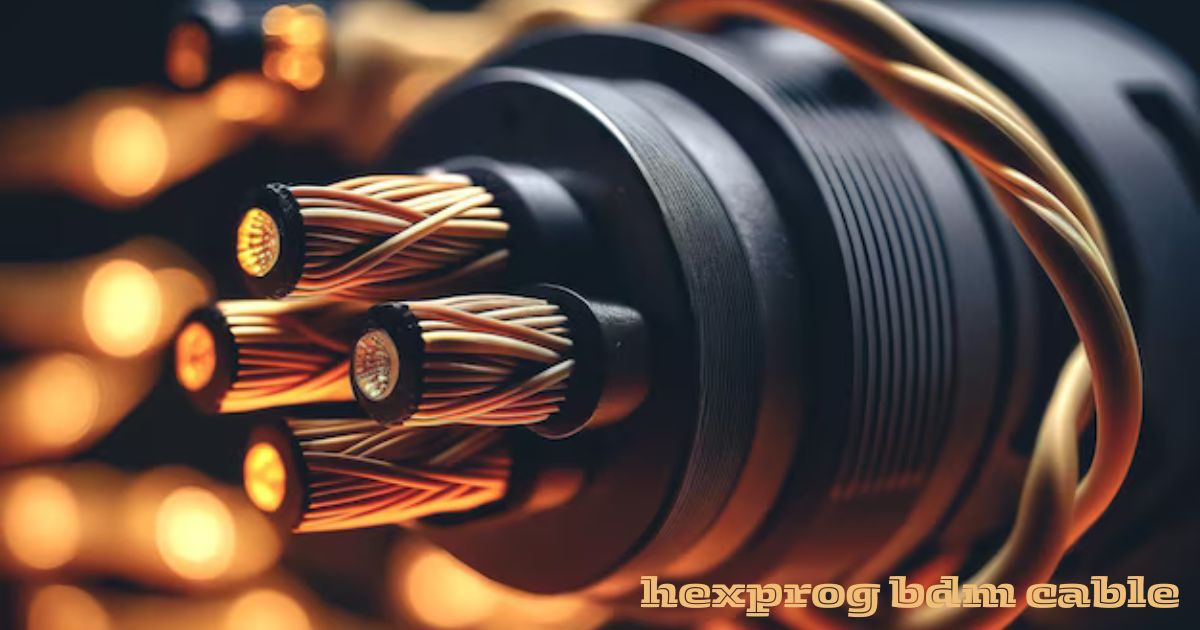In the world of automotive programming and diagnostics, having the right tools is essential. One such tool that is gaining significant attention is the Hexprog BDM cable. This advanced cable is designed to facilitate the programming, flashing, and reading of automotive control units (ECUs) in the most efficient manner possible. Whether you are an automotive technician, tuner, or hobbyist, understanding how to use a BDM cable, especially from a trusted brand like Hexprog, can be a game-changer for your workflow.
What is a Hexprog BDM Cable?
BDM (Background Debug Mode) cables are used to access a vehicle’s ECU (Engine Control Unit) or other embedded systems for programming, data extraction, or diagnostics. The Hexprog BDM cable is a specialized cable designed by the Hexprog team, widely known for their high-quality ECU programming tools. This cable allows you to read and write data directly to and from the ECU, particularly when OBD (On-Board Diagnostics) methods are not feasible due to security restrictions or hardware incompatibility. In simpler terms, if you’re working on a car where standard OBD protocols are insufficient for accessing or modifying ECU data, the Hexprog BDM cable steps in to do the job effectively.
Features of the Hexprog BDM Cable
Wide ECU Compatibility: The Hexprog BDM cable supports a wide range of ECUs, including models from popular manufacturers such as Bosch, Siemens, Magneti Marelli, and others. This makes it a versatile tool for anyone working with various types of cars. High-Speed Data Transfer: One of the major advantages of using this cable is its ability to transfer data quickly and efficiently, minimizing the downtime during programming or reading tasks. Error-Free Data Communication: This cable ensures error-free communication between your programming device (e.g., Hexprog programmer) and the vehicle’s ECU. The secure and reliable connection ensures that data corruption or incomplete flashing does not occur. Plug and Play Functionality: With its user-friendly design, this cable requires minimal setup. Simply connect it to the ECU, and you are ready to start working. Compact Design: Its compact and portable design makes it easy to carry and store when not in use, ideal for mobile technicians or workshop environments with limited space.
Steps to Use the Hexprog BDM Cable:
Connecting the Cable: First, connect the BDM cable to the correct pins on the ECU. This often requires precision, as improper connections can result in errors. Many ECUs have a dedicated BDM port, which can be identified using ECU pinout diagrams. Initiating the Programmer: Once connected, start the Hexprog ECU programmer or another compatible device to initialize communication with the ECU. Reading Data: The programmer will begin reading the data stored on the ECU. This can include critical engine maps, configurations, and other important vehicle-specific information.
Applications of Hexprog BDM Cable
The Hexprog BDM cable is used in a variety of automotive programming and diagnostic tasks, including: ECU Tuning: Modify engine parameters to improve performance, fuel efficiency, or throttle response. ECU Cloning: Copy data from one ECU to another, which is useful in scenarios like ECU replacement. DTC (Diagnostic Trouble Code) Clearing: Read and clear diagnostic codes from the ECU. Data Recovery: Recover lost or corrupted data from the ECU after malfunction or failure. Chip Tuning: Modify ECU software to enhance the vehicle’s performance beyond factory settings.
Advantages of Using Hexprog BDM Cable
Enhanced Access: BDM technology allows for greater access to the ECU compared to traditional OBD methods. Security Features: With this , you can bypass security protocols that prevent certain OBD tools from communicating with the ECU. Cost-Effective: For automotive workshops, investing in a Hexprog BDM cable means faster diagnostics and repairs, resulting in more cars serviced in a shorter time. Versatility: The ability to use the same cable across multiple vehicle platforms and ECU models makes it a valuable asset for technicians. Time Efficiency: Direct ECU access reduces the time spent troubleshooting and reprogramming the vehicle, as the BDM method eliminates the need for additional disassembly in many cases.
Conclusion
The Hexprog BDM cable is an indispensable tool for any automotive professional looking to perform advanced ECU diagnostics, programming, or cloning. With its wide compatibility, ease of use, and reliable performance, this cable enables efficient ECU access and programming, making it a must-have in any automotive workshop. Whether you’re working on engine tuning, data recovery, or ECU cloning, this will streamline your processes and deliver exceptional results.
FAQs
What is the difference between BDM and OBD programming?
BDM programming allows direct access to the ECU’s microcontroller, providing deeper control over ECU data. OBD programming, on the other hand, communicates with the ECU via the car’s OBD port, which may restrict access to certain critical areas due to security protocols. BDM is typically preferred for in-depth programming, while OBD is used for basic diagnostics and code clearing.
Can I use the Hexprog BDM cable with other ECU programmers?
Yes, this cable is compatible with a variety of ECU programmers, provided they support BDM communication protocols.
Do I need special software to use the Hexprog BDM cable?
Yes, you will need compatible software to read, modify, and write data to the ECU. Hexprog provides its own software suite, but third-party options may also work.
What vehicles are compatible with the Hexprog BDM cable?
This cable supports a wide variety of ECUs found in vehicles from brands like BMW, Audi, Volkswagen, Mercedes, and more. Check the Hexprog compatibility list or the ECU type before attempting any programming tasks.
Is using a BDM cable legal?
In most countries, using a BDM cable for ECU diagnostics, repairs, or tuning is legal. However, it’s essential to ensure that modifications comply with local emission and road safety regulations, particularly when it comes to ECU tuning for performance enhancements.
How long does it take to read an ECU with a BDM cable?
The time required depends on the size of the ECU’s memory and the data transfer speed. In general, it can take anywhere from a few minutes to half an hour to complete a read or write operation.
Can I clone an ECU with the Hexprog BDM cable?
Yes, the BDM cable allows you to clone an ECU by copying its data to another ECU. This is especially useful for replacing a damaged or faulty ECU without losing the vehicle’s original configurations.











